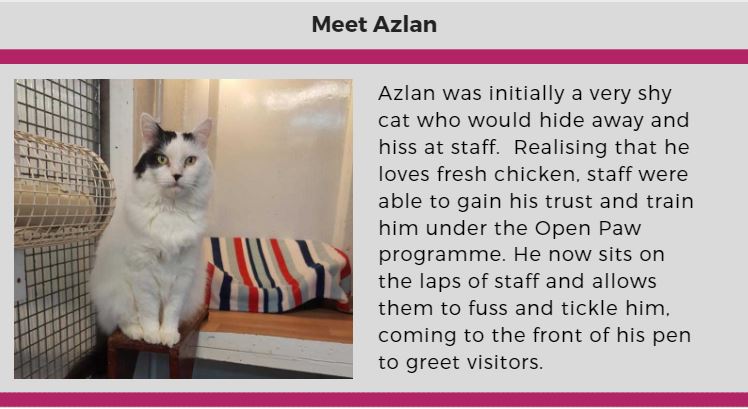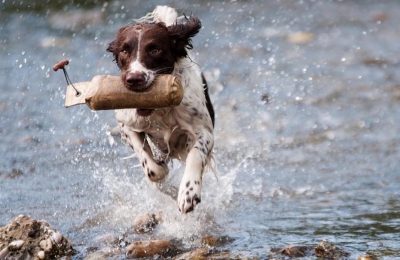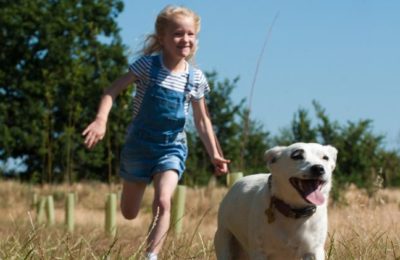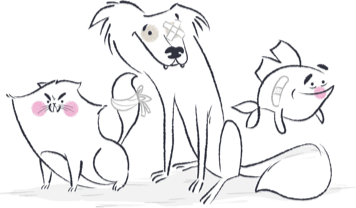ast year, nearly 200,000 stray dogs and cats were rescued by adoption centres across the UK. With some 1,500 rescue centres struggling to cope with the pace of new arrivals, it is vital they find suitable homes for these abandoned pets as quickly as possible. To help alleviate the situation, The National Animal Welfare Trust (NAWT) has successfully rolled out an innovative new programme called Open Paw to improve the rehoming rate for pets.
NAWT is a rescue and rehoming charity which runs five centres across the South East of the country. Each year, over 1,100 dogs and cats are rescued by the charity spending an average of 40 days in their care. No time limit is put on how long an animal stays with them, with some long-term residents looked after for months, or even over a year. However, the quicker the rescue centre can rehome a pet, the more animals it can help.
In 2015, NAWT became the first organisation in the UK to introduce Open Paw. Originally conceived in the US by dog behaviourists, Kelly Gorman Dunbar and her veterinarian husband Dr Ian Dunbar, the scheme is designed as a “university” for rescued cats and dogs. After a successful trial at its site in Watford, the programme has now been rolled out across all of its rescue homes.
Speaking about Open Paw, NAWT comments that it aims to “provide our animals with the enrichment, training and social skills they will need to make them more rehomable and attractive to potential families”. In addition, the initiative provides training for staff, volunteers and existing and prospective pet parents on responsible pet ownership and training. Given that the fundamental aim of the centre is to find new homes for pets, NAWT must ensure that it creates the optimal environment for potential pet owners to view, and bond with, cats and dogs.
First impressions are key
As with any introductions, first impressions are key. Potential owners looking at a rescue dog for example take just one minute to assess whether they want to meet a dog or not. Calm dogs, facing the front of the kennel, are far more likely to appeal to potential pet parents than those barking and jumping up and down. Once outside the kennel, owners take just eight minutes to make a decision as to whether they want to rescue a dog – they are more likely to think positively if the dog plays with them and then lies quietly down next to them.
If dogs and cats can learn these skills, they have a far higher chance of being rehomed more quickly. In addition, staff teach or reinforce good social skills, such as toilet training, which will make the pets more appealing to new owners.

7 year old Azlan keeps a look-out for a suitable new pet parent
How does Open Paw work?
A key part of the programme is to ensure that rescued pets feel safe and secure in the centre and are happy to interact with visitors and potential parents. Open Paw is designed to provide cats and dogs with mentally stimulating activities whilst keeping them calm and in the right frame of mind for learning whilst being looked after.
The four key features of the scheme are toilet training, implementing spot cleaning routines, creating more stimulating ways of feeding with Kongs and interactive feeders (no bowls) and a four-stage training programme to encourage the pets to engage with prospective owners, remain calm, understand basic commands and manners, and to walk calmly on a lead.
Success of Open Paw programme
Initially, the course focussed on dogs, resulting in 15% more dogs finding their forever home than before. Dogs who arrive on the rehoming yard having already progressed through the Open Paw routine from the intake kennels, settle more quickly, react to visitors better, enjoy their food toys and their walks, and exhibit much less kennel stress and displacement behaviours than those who have not been on the programme.
These positive results gave NAWT the confidence to extend the scheme to cats, which it has developed in conjunction with cat behaviourists. The cat scheme completed a successful trial at its centre in Watford and is due to be extended to all of its catteries by the end of 2017.
Visitors to the cattery are amazed at how interested the cats are in them, resulting in visitors spending longer looking at the cats. This makes it much more likely that a visitor will be able to bond with a cat through the pen, wanting to spend more time with them and possibly offer them a home.
NAWT has received many positive comments on the scheme from colleagues within other animal charities, who see the difference in cat behaviour when compared to a non-Open-Paw cattery. Cats are less likely to hide away from visitors, and take more interest in their food and playing with toys. As a result, they are less stressed, making them easier to access and be matched to a new home.
Overall, NAWT believes that the Open Paw programme makes both the kennels and the cattery a more pleasant place for visitors to spend time, resulting in them being more likely to make an informed choice of a new pet in less time.

Milo, the terrier, loves playing in his new home
Commenting on the programme, CEO Clare Williams says: “Open Paw has made us make some radical changes to the way we do things to improve our animals’ welfare. We’re encouraging visitors to our centres to interact with our animals at a time when some rescue centres are restricting visitors’ access to their rehoming pens. Furthermore, our volunteers love playing an important part in the animals’ welfare development, our staff get to spend more quality time too and visitors are able to connect with the animals when they visit. Come and see it for yourself.”
These videos illustrate the success of the Open Paw programme showing how cats and dogs behaved before and after the training: Open Paw programme for cats and Open Paw programme for dogs.
Open Paw has made us make some radical changes to the way we do things to improve our animals’ welfare.
Clare Williams, CEO National Animal Welfare Trust
With rescue centres admitting some 37,000 dogs and upwards of 150,000 stray cats every year, it is important that programmes such as these enable rescue and rehoming centres find suitable homes as quickly as possible for abandoned pets.
At CatDogFish, we fully support the adoption of pets from rescue centres and believe that programmes such as Open Paw, which improve the chances of cats and dogs finding suitable permanent homes, should be encouraged. Commenting on Open Paw, Gabrielle Hase, CEO of CatDogFish says: “We think the programme is fantastic and overcomes a lot of the misconceptions about rescue animals that they are mentally damaged and won’t make good pets. I have always adopted from rescue homes, and can’t imagine finding a new pet any other way, but we recognise that some potential pet parents have legitimate concerns about the suitability of a rescue pet. We love that this programme has had such success in overcoming these concerns.”
If you’re interested in adopting a pet from the National Animal Welfare Centre or finding out more about the Open Paw programme, visit their website or one of their centres in Berkshire, Cornwall, Essex, Hertfordshire or Somerset. Clare Williams, the CEO of the National Animal Welfare Trust, is on our panel of experts.







